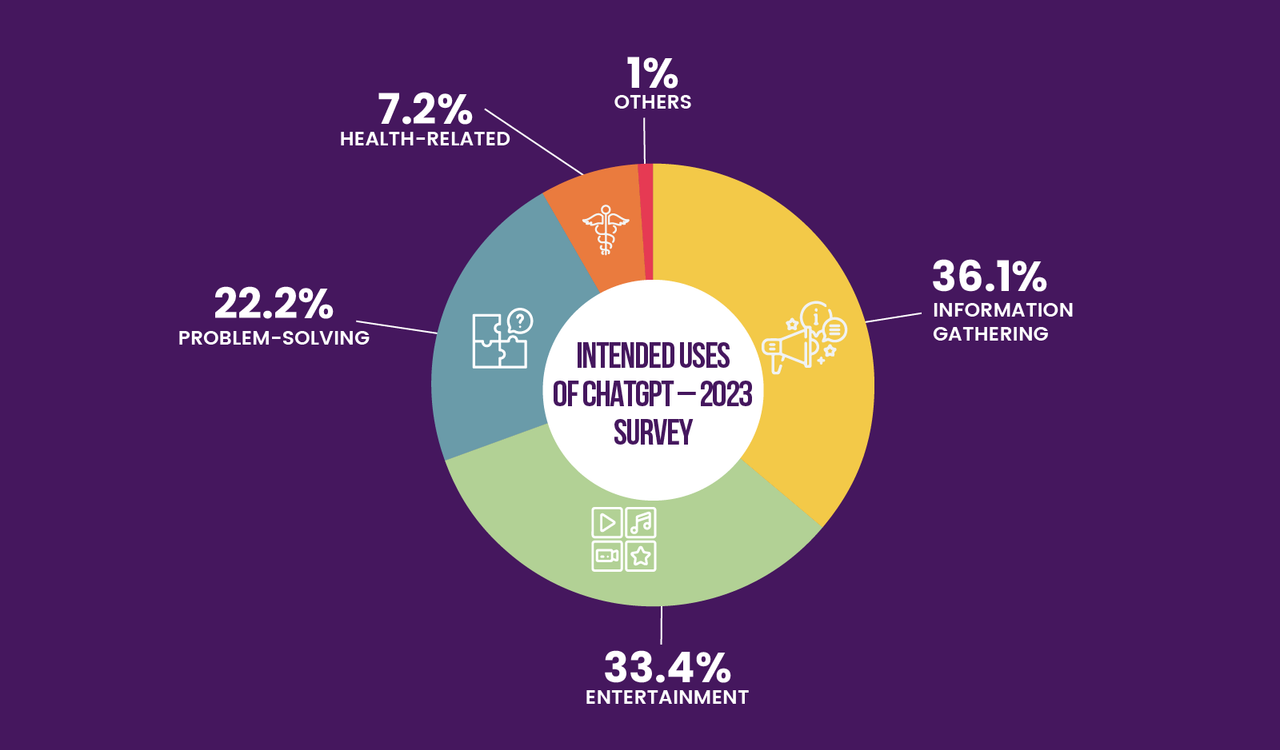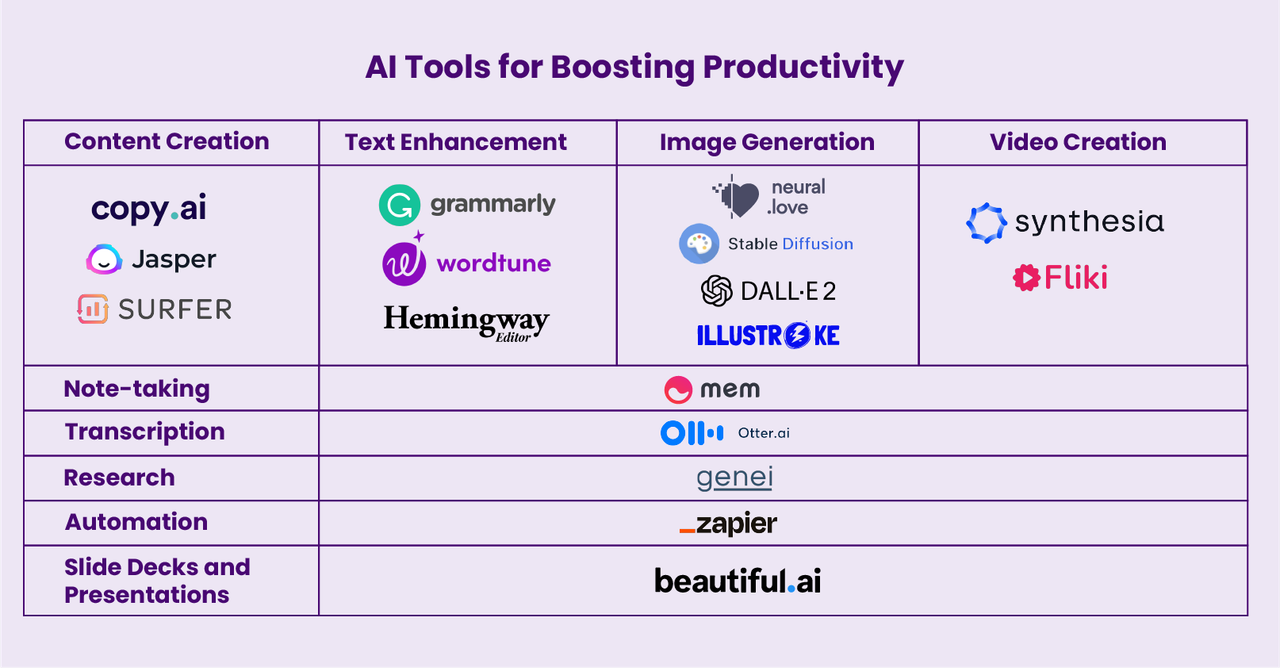14/07/2023
How to Stand Out in a Sea of AI-Generated Content

Just two months following its launch in November 2022, OpenAI’s widely popular chatbot, ChatGPT, had amassed more than 100 million users. This rapid growth marks the model as the fastest-growing consumer application in all of history.
And that number has only risen since.
In an effort to compete with the growing mass of stuff available on the web, users are flocking to ChatGPT and other large language models (LLMs) to pump out even more content. After all, these tools are more operational, more efficient, and sometimes arguably more creative than a simple human worker.
In fact, 77% of businesses that currently use natural-language processing (NLP) solutions plan to increase their investment, demonstrating that LLMs will continue to play a significant role in our daily operations of content creation moving forward.

Graph shows the results of a study conducted by West Virginia University.
How Generative AI Can Help Content Creators
Despite the formidable prowess of generative AI, we don’t suggest using it as a production tool for content–or at least not exclusively. That’s because the output may not always meet Google’s content guidelines. Unless, of course, you use the AI to your advantage…
Tips & Tricks for AI Content
When used wisely, LLMs like ChatGPT can become formidable tools for content creators of all kinds. The popularity of the tool comes from its ability to cut down one’s time doing tedious tasks, which gives more room for brainstorming, creativity, and production.
Generative AI can help you:
1. Organize your thoughts – Have you ever had a wonderful idea but didn’t know how to formulate it? LLMs can help content creators establish something concrete by riffing off the contemplations they share with it. The interactive nature of a conversation with a chatbot can assist you in coming up with new ideas during the brainstorming process.
2. Create an outline – LLMs can take the ideas generated during a brainstorming session and provide structured guidance as to how those can come together. The tools help group the subject matter into similar ideas and subheadings, creating a definitive blueprint for any type of content.
3. Summarize an idea – AI solutions use a form of processing known as “extractive summarization” to understand the content, identify the main points, and summarize it. Thanks to this, you can take even the most detailed report, article, conversation, script, etc., and condense it into a bite-sized summary.
4. Expand on an idea – Tools like ChatGPT are great at taking snippets of ideas and weaving them together to create something coherent. However, it is important to know how to post-edit AI-generated content to ensure you do not fall into the trap of misinformation or false narratives. By making sure your copy is human-centered (by following the tips and tricks above), you can amp up your product all the while guaranteeing your stuff is a cut above the rest.
5. Proofread copy – Even the most hawkeyed of editors can miss a spelling or grammatical error. LLMs can help content creators refine their work by pinpointing these mistakes or clarifying a confusing sentence. However, ChatGPT has been known to produce grammatical errors, so it is important to employ it as an aid, not as a replacement for humans.
 Provided above are some of the best AI productivity tools curated by Zapier.
Provided above are some of the best AI productivity tools curated by Zapier.
How will the influx of AI-generated content influence what users want from the web?
As AI takes up more space in the world of content creation, users are likely to turn to what may become a prized treasure among a bunch of trash: human-generated content. It won’t be a lot unlike how, after years of mass-produced foods and goods, we saw an increased demand for artisanal objects and craft beer.
This may include the following:
1. Stories – That’s right, we’ll actually want to read those long sagas about how some influencer chef went apple-picking with their family on a lovely autumn day and hand-selected the perfect variety to make their famous apple pie. Stories are the bedrock of any quality content because they provide us with a connection and give us an idea or image we might like to emulate.
2. Faces – And with every story, we will want a face. As we place human content creators in the spotlight, we will want to know the “who” behind every article written and every video produced. Understanding an individual’s background and how they got to where they are will become a crucial element of good, engaging content. It will also be the assurance we need that the content is not made by a machine.
3. Expertise – Because AI is prone to generate a lot of misinformation, we can anticipate a growing desire to have subject specialists share with us their knowledge. Let’s be honest: you’ll probably feel a lot more confident knowing that the how-to tutorial for changing your car’s brake pads was created by a formally trained mechanic, not a machine.
4. Experience – Let’s say you want to travel to India, but you don’t know how to even begin preparing for the trip. You might want to know when the best season to travel is, what sights are not to be missed, and how to most easily get around the country. It does not come as a surprise that the very best resource would be someone who had that experience. Sought-out content in the future will be made by individuals who know what they’re talking about: it’s as easy as that.
5. Emotion – Emotions are and will remain a purely human experience (or at least until machines become sentient and develop their own personality, thoughts, and feelings. But that’s a conversation for another time). So, content that knows just how to empathize and touch us on a deeper level is something that will become widely popular.
6. Interaction – Yes, there are chatbots with whom we can exchange and interact. But it seems like they only get to a certain point. AI might be able to ask how you are or how you feel about a certain subject, but it cannot understand the complexities of human nature and certainly won’t be able to provide an appropriately personalized response. That’s why content creators will be expected to provide thoughtful feedback to users’ comments and questions on every type of platform they publish.
Final Thoughts on Generative AI
The numbers don’t lie: generative AI is not just a passing trend, but an integral part of our evolving digital landscape. Therefore, it’s essential to recognize its drawbacks, harness its power, and focus on the quality of your content. By following the tips and tricks provided, you can ensure that your content is the type sought out on the web and stands out among the vast sea of both human and machine-generated information.